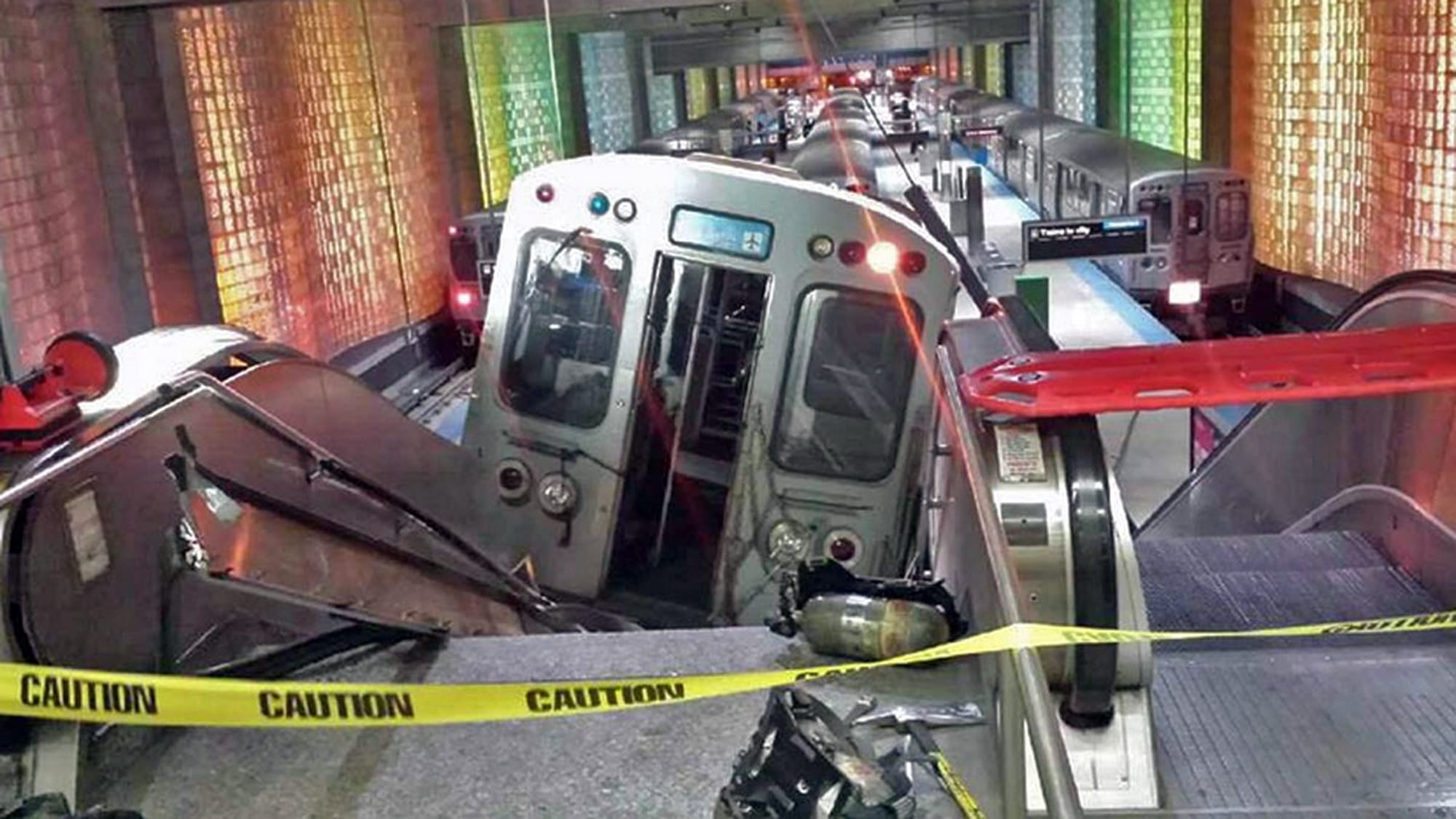CHICAGO — A Chicago commuter train was not speeding when it jumped its tracks and screeched up an escalator at one of the world’s busiest airports, the National Transportation Safety Board said Tuesday.
NTSB investigator Ted Turpin said a preliminary review of Monday’s derailment at O’Hare International Airport showed that the train was traveling at 25 mph — the correct speed — as it entered the station. More than 30 people were injured in the crash.
Turpin, who is in charge of the investigation, said an automatic emergency braking system was activated on the tracks, but that it failed to stop the train as it headed for the platform.
“It activated,” Turpin said. “That’s all we know factually. Now, whether it did it in time or not, that’s an analysis that we have to figure out.”
The union representing the train operator said fatigue may have played a role in the crash at the nation’s second busiest airport, suggesting the woman may have dozed off. The accident occurred around 3 a.m.
The operator, who was not immediately identified, had started work at around 8 p.m. on Sunday but had recently put in a lot of overtime, Amalgamated Transit Union Local 308 President Robert Kelly said Monday afternoon.
“I know she works a lot — as a lot of our members do,” he said. “They gotta earn a living. … She was extremely tired.”
NTSB officials planned to speak with the operator Tuesday afternoon.
Kelly said the operator took standard drug and alcohol tests after the derailment and that she assured him they were not an issue.
Asked whether she may have nodded off, Kelly responded: “The indication is there. Yes.”
Federal investigators were back on the scene and hoped to turn the scene over to local officials Tuesday to begin removing the train from the escalator at the underground Chicago Transit Authority station.
Monday’s accident could have caused untold death and destruction had the crash occurred during the day when the station is usually packed with luggage-carrying travelers, a transportation expert said.
“It is a miracle that nobody died,” said Joseph Schwieterman, a transportation expert at DePaul University.
“A train running up a (crowded) escalator could have been a worst case scenario,” Schwieterman said. “When pedestrians are hit by a train, it is usual fatal.”
He also noted that jumping the track likely dissipated the train’s forward movement, lessening the accident’s severity. A more abrupt stop would have more violently slammed people into the train’s seats and walls, he said.
“That was a lucky break,” he said. “A train hitting a wall at … high speed could easily have been fatal for many.”
The train is designed to stop if operators become incapacitated and their hand slips off the controls. Kelly speculated that, upon impact, inertia may have thrown the operator against the hand switch, accelerating it onto the escalator.
Investigators have been scrutinizing the train’s brakes, track signals and other potential factors while reviewing video footage from more than 40 cameras in the station and on the train, Turpin said.
The station remained closed Tuesday morning, and CTA buses took passengers to and from O’Hare to the next station on the line. Transport officials have not said when full Blue Line service will resume at O’Hare.




